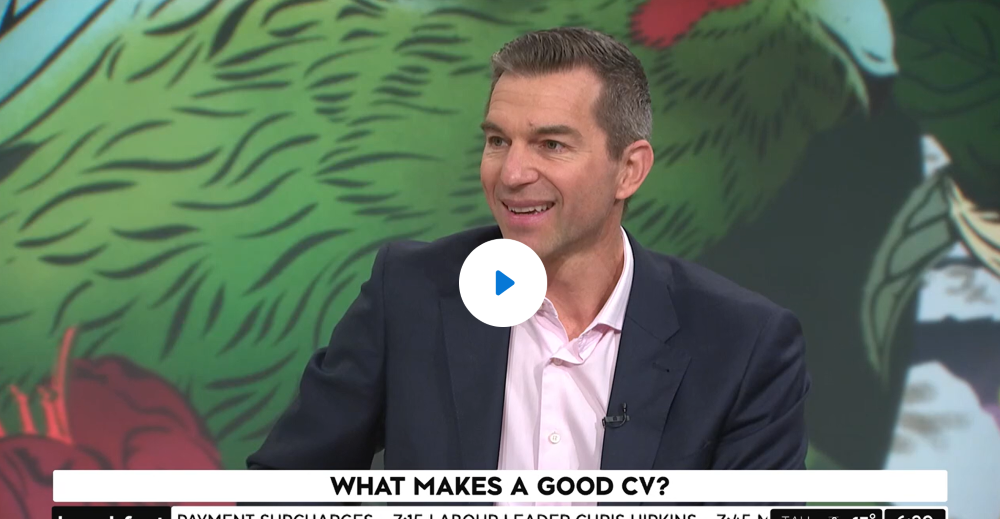July 26, 2021
Let's Stop Trying to Hire Someone Who Can Do the Job
by
Tony Pownall
...And Start Hiring On Potential
In my almost 20 years helping managers recruit better, I’ve been regularly frustrated by our insistence as New Zealand hiring managers that our next hire needs to know the job, know the industry, or both. Let’s use this current talent squeeze to make a shift in who and how we hire, now.

We’re currently experiencing the tightest labour market in a generation however this fixation on skills and experience has been holding us back for a long time, it’s just hurting more now.
So, let’s use this current talent squeeze to make a shift in who and how we hire, now. If not, we’re at risk of grinding our businesses to a halt through hiring the wrong person or not at all. I’ve always felt strongly that the number one priority for any leader is to hire the right talent. If we fail with this, then the rest is an uphill battle at best.
I get why this approach still prevails in New Zealand: L&D budget’s never really came back post the GFC, businesses run leaner creating pressure to be ‘productive’ quickly, and the roles of middle managers (who bear the brunt of hiring and coaching pressures) are broader. However, hiring with a focus on skills and experience might feel like a ‘safe’ hire, but I personally haven’t seen a strong correlation between this focus and a ‘great’ hire.
So why do it?
Technology is changing roles faster than ever before:
This can make many aspects of a role easier to learn as new technology is more intuitive.It also means that traditional skill sets may even be obsolete, so importing the skills that someone has developed elsewhere may mean importing engrained and outdated habits.
We need to lift productivity and new thinking can help do it:
New Zealand has a productivity problem. We have failed to increase per worker output as fast as other economies, making it harder to justify increasing wages. Every time someone leaves a role we must use it as an opportunity to question what we need, or if we need it at all. Remember, it’s a lot easier to rescope a role before someone is in it! Look for people who can help challenge the status quo and bring new thinking to both old and new problems.
It’s cheaper and you’ll build more loyalty and retention:
Every time you go to market with a long list of prerequisites you will take longer and/or pay more as a result. Candidates always remember the hiring manager who took a punt on them, saw their potential and invested in their development. They’ll give greater discretionary effort and stick around longer.
It’s an opportunity for others to step up:
We’re busy and training takes time, I get it. But I challenge you to look within and around your team for those role models who can share the load of up-skilling. Assign different elements of the new starters’ onboarding plan to those ready and willing for greater responsibility and everyone benefits.
Let’s explore potential a little further. The definition is widely accepted but how to measure it in an employee or candidate isn’t. The biggest trap I see is confusing performance and potential. There is some correlation, but remember almost all high potentials are also high performers, yet only about a third of high performers are actually high potentials. The 9 box grid has lost favour and many other approaches to measuring potential seem vague or complex. I personally prefer to focus on just three generic attributes:
1. Tolerance for ambiguity: Someone who can work with some grey, fill in the missing pieces and is less uncomfortable without direction. Someone who can take in the information at hand, figure out what’s important and what’s missing and workout their options from there. These people thrive by being set a challenge or direction not a task.
2. Stress resilience: They’ll adapt more quickly to change, won’t become paralysed or fearful of shifting priorities, unforeseen problems or failures, and are more likely to remain productive and focused on the outcome in times of setback.
3. Ability to self-learn (and unlearn): Someone with the motivation and self-awareness to take responsibility for their own learning. They seek out feedback and input from others and are constantly on the look-out for new ways to do things. They’re often described as inquisitive, open minded or curious.
Five things to help you hire on potential
Hire a Temp or Contractor:
Too many businesses see temps and contractors as a cost rather than investment. If you suspect a recently vacated role needs to change but you haven’t got the time or understanding of the role to be sure, hire a temp or contractor who does. By bringing in a more expensive resource temporarily to help reshape the role you’ll easily save time and money in the long run.
Write a success profile BEFORE you hire to understand what you need before you see it:
A simple success profile has two short bullet point lists:
1. The skills and experience required day one
2. The key behaviours for long term success
These are harder to write than you’d think. It’s important to limit each list to just 3-4 things and be as specific (and there for measurable) as possible. IE: I often hear ‘good communication’ as critical behaviour but that’s way too vague and subjective to mean anything. If you’re struggling to reduce the first list try first separating into ‘must haves’ and ‘nice to haves’. You can now write 1-2 questions for each behaviour you’ve identified.
Bring in a different opinion or sounding board:
I know first-hand that hiring a ‘left field’ candidate tests our confidence and decision making. Share your success profile with a trusted manager, colleague or consultant and run the process together.
Look internally FIRST:
Embrace the concept of hiring on potential and suddenly internal options look more attractive. I frequently hear of situations whereby internals are only reluctantly considered at the end of the process. I’m a huge fan of promoting or seconding someone who’s already proven their cultural / behavioural fit. I’d rather promote someone with 50% of the skills than hire someone with 80%. It’s likely their old role will be easier to backfill too. If you’re unsure, run a full external process and benchmark them against the market, that way if they do get the role they’ll also feel they’ve earned it, plus you’ll learn a bit more about them on the way.
Throw out the old interview guide:
I still hear some terrible interview techniques and questions. I don’t understand what some are trying to even measure let alone their relevance to the job. Be very careful too with generic interview guides or using the CV to guide the interview. Both can distract you from what is critical to assess based on the current context.
You should always have 3-5 behavioural questions specific to your success profile that is central to the interview. If in doubt explore the generic potential attributes above with questions like “Explain a time when you have taken it upon yourself to research or learn something new on the basis it would improve you or your team’s outputs”.
Like the concept, but need a bit more support on any of the above? Get in touch, helping people grow and thrive by connecting potential and opportunity is what lights our fire.




